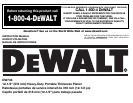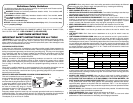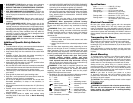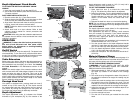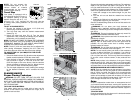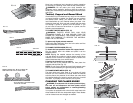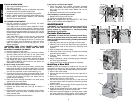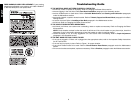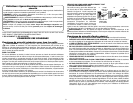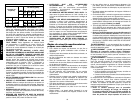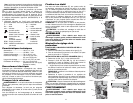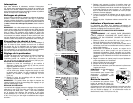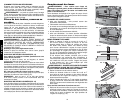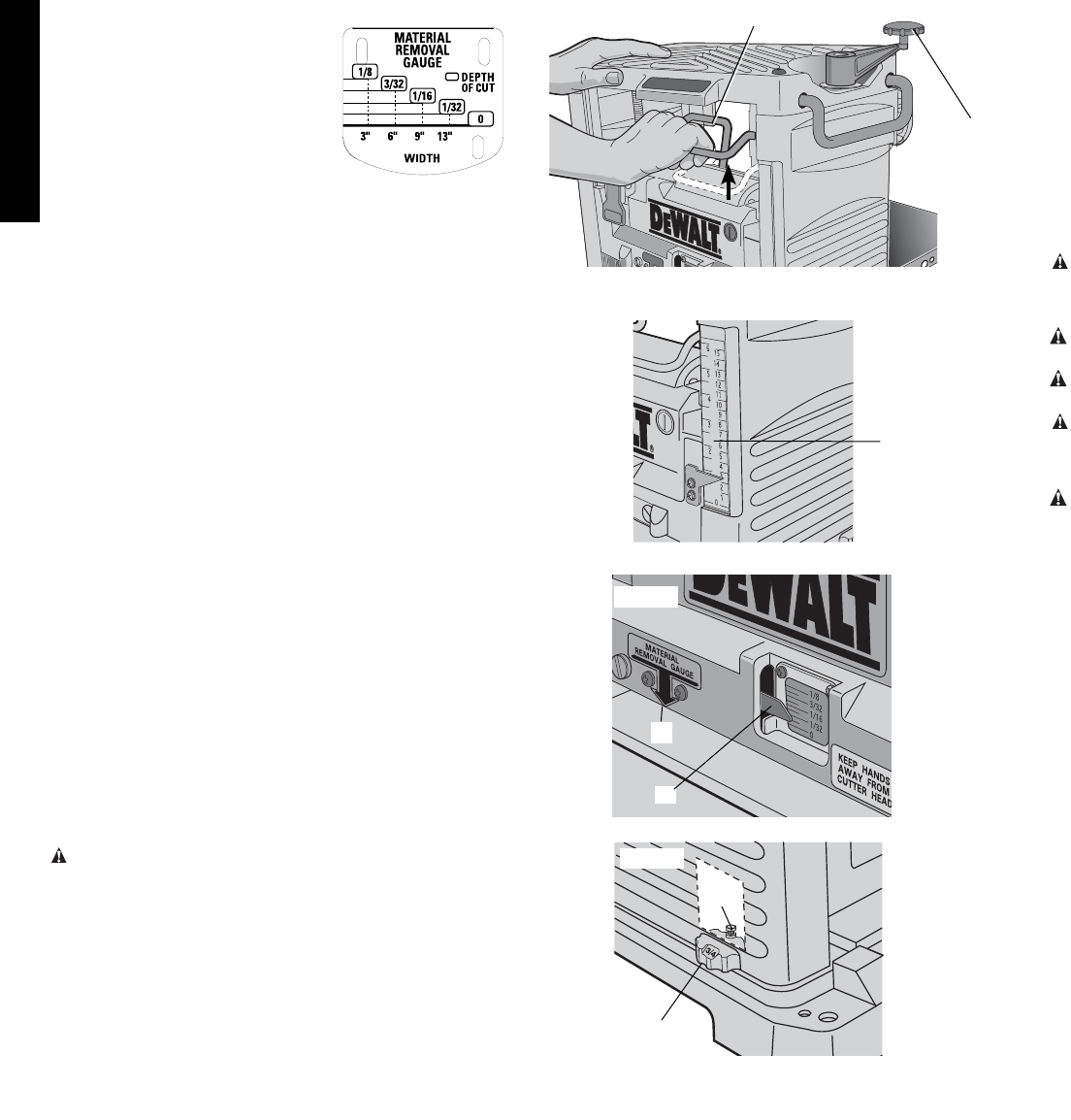
English
4
NOTE: Do not exceed the
TABLE A
recommended depth of cut for
various widths of material
recommended on the material
removal gauge (Table A).
Turret Stop
Your planer is equipped with a
turret stop (M), shown in Figure11,
for repetitive planing of pre-set
depths. Stops are set at 0", 1/4"
(6.4 mm), 1/2" ( 12.7 mm) and 3/4" (19.0 mm). Use the
0" setting when planing between 1/8" (3.2 mm) and 1/4"
(6.4mm).
TO SET A PLANING DEPTH
1. Be sure the carriage is set above 1-1/4" (31.8 mm)
before trying to set the turret stop.
2. Turn the turret stop until the desired measurement
shows (Fig.11).
3. Unlock the head lock lever (Fig. 8). Turn the depth
adjustment crank, lowering the carriage by the desired
increments, until it contacts the turret stop.
NOTE: DO NOT USE FORCE TO CRANK THE CARRIAGE
BELOW THE LEVEL THAT THE TURRET STOP INDICATES.
PERMANENT DAMAGE TO THE HEIGHT ADJUST MENT
SYSTEM ON YOUR PLANER WILL RESULT.
NOTE: The 3/4" (19.0 mm) turret stop can be adjusted for
other planing thicknesses. Adjusting the 3/4" (19.0 mm)
turret stop does not affect the other turret stop settings.
TO ADJUST THE 3/4" (19.0 MM) STOP FOR OTHER
THICKNESSES
1. Unlock the head lock lever (Fig.8) and turn the adjustment
handle counterclockwise to raise the cutter head.
2. From the back of the tool, locate the turret adjustment
bolt (N) shown in Figure11. This bolt is set for a 3/4"
(19.0 mm) depth of cut at the factory. Use the crescent
wrench provided to loosen the jam nut. Adjust the bolt
up or down to reach the desired planing depth.
3. Turn the depth adjustment crank, lowering the carriage
by the desired increments, until it contacts the turret
stop.
PLANING BASICS
Proper Planing Technique
WARNING: DO NOT TURN THE UNIT ON WITH THE
MATERIAL ALREADY INSERTED UNDER THE CARRIAGE.
WAIT UNTIL THE ROLLERS AND CUTTER HEAD ARE UP
TO FULL SPEED BEFORE FEEDING YOUR MATERIAL
INTO THE MACHINE.
TO PLANE YOUR MATERIAL
Your planer works best on lumber with at least one flat
surface. If both sides of your workpiece are rough, use a
jointer to level one face.
Support the workpiece adequately at all times. The maximum
depth of cut your planer can take in one pass is 1/8" (3.2
mm) [on material less than 6" (152 mm) wide]. Never attempt
to modify your planer to take a deeper cut. Follow the depth/
width of cut guidelines shown in Table A for best results.
1. Lower the carriage to the desired height for your first
pass.
2. Turn the unit on and feed the material into the feed
rollers.
3. Examine the finished cut and adjust the carriage to the
appropriate height for your next pass.
See the Troubleshooting Guide at the end of this section for
more information.
WARNING: Do not place your body between the
workpiece and a stationary structure while the material is
feeding out. Personal injury and/or damage to the work piece
may occur.
WARNING: This tool is designed to plane only wood. Do
not try to plane materials other than wood.
WARNING: Never plane wood which is shorter than 12"
(304.8mm) in length.
WARNING: Plane only wood that is free from foreign
objects, with no loose knots and as few tight knots as
possible. Do not plane wood that is severely warped,
twisted, knotted or bowed.
WARNING: Do not feed wood across the grain, always
feed wood in the direction of the wood grain.
NOTE: For best results, plane both sides of the workpiece
to reach a desired thickness. For example, if you need to
remove 1/8" (3.2 mm) from your workpiece, remove 1/16"
(1.6 mm) from each side. This not only allows the workpiece
to dry with a even moisture content, it also produces finer
cuts.
NOTE: Always plane in the direction of the grain. Planing
material less than 3/4" (19.0 mm) wide is not recommended.
If you must plane narrow material, group the pieces together
and plane them as one wide workpiece whenever possible.
MINIMUM/MAXIMUM WIDTH/HEIGHT/DEPTH
NOTE: There is a certain area on the carriage of your planer
that will allow the 1/8" (3.2 mm) depth of cut on material less
than 6" (152.4mm) wide. See Figure 12 for an approximate
location of this area. Your material must move under this
section of the carriage or planer will not take a 1/8" (3.2 mm)
depth of cut. If the material is wider than 6" (152.4 mm), it will
not fit through this area with an 1/8" depth cut.
Snipe
Snipe is a depression made when an unsupported end of
your material bends downward, causing the opposite end
to lift up into the cutter head. If you are planing material that
is especially long, the use of additional material support is
recommended.
TO AVOID SNIPE
Feed the workpiece into the planer so it is level and remains
flat against the base at all times.
FIG. 9
J
K
L
FIG. 10
FIG. 11
M
N
FIG. 8
I
F



